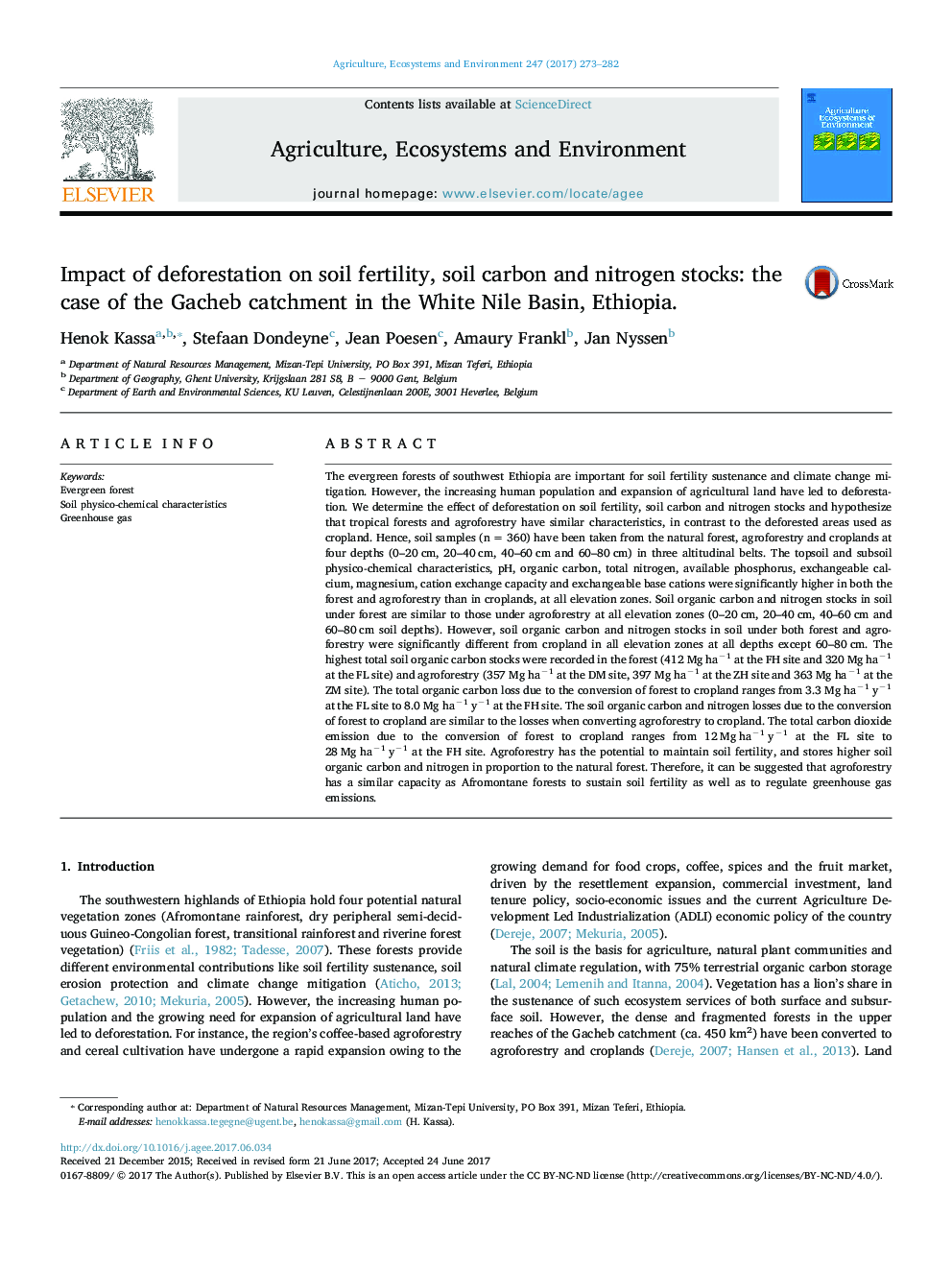| کد مقاله | کد نشریه | سال انتشار | مقاله انگلیسی | نسخه تمام متن |
|---|---|---|---|---|
| 5538001 | 1552005 | 2017 | 10 صفحه PDF | دانلود رایگان |
عنوان انگلیسی مقاله ISI
Impact of deforestation on soil fertility, soil carbon and nitrogen stocks: the case of the Gacheb catchment in the White Nile Basin, Ethiopia.
ترجمه فارسی عنوان
تأثیر جنگل زدایی بر بارندگی خاک، ذخایر کربن و نیتروژن خاک: مورد حوضه گچب در حوضه سفید نیل، اتیوپی.
دانلود مقاله + سفارش ترجمه
دانلود مقاله ISI انگلیسی
رایگان برای ایرانیان
کلمات کلیدی
موضوعات مرتبط
علوم زیستی و بیوفناوری
علوم کشاورزی و بیولوژیک
علوم زراعت و اصلاح نباتات
چکیده انگلیسی
The evergreen forests of southwest Ethiopia are important for soil fertility sustenance and climate change mitigation. However, the increasing human population and expansion of agricultural land have led to deforestation. We determine the effect of deforestation on soil fertility, soil carbon and nitrogen stocks and hypothesize that tropical forests and agroforestry have similar characteristics, in contrast to the deforested areas used as cropland. Hence, soil samples (n = 360) have been taken from the natural forest, agroforestry and croplands at four depths (0-20 cm, 20-40 cm, 40-60 cm and 60-80 cm) in three altitudinal belts. The topsoil and subsoil physico-chemical characteristics, pH, organic carbon, total nitrogen, available phosphorus, exchangeable calcium, magnesium, cation exchange capacity and exchangeable base cations were significantly higher in both the forest and agroforestry than in croplands, at all elevation zones. Soil organic carbon and nitrogen stocks in soil under forest are similar to those under agroforestry at all elevation zones (0-20 cm, 20-40 cm, 40-60 cm and 60-80 cm soil depths). However, soil organic carbon and nitrogen stocks in soil under both forest and agroforestry were significantly different from cropland in all elevation zones at all depths except 60-80 cm. The highest total soil organic carbon stocks were recorded in the forest (412 Mg haâ1 at the FH site and 320 Mg haâ1 at the FL site) and agroforestry (357 Mg haâ1 at the DM site, 397 Mg haâ1 at the ZH site and 363 Mg haâ1 at the ZM site). The total organic carbon loss due to the conversion of forest to cropland ranges from 3.3 Mg haâ1 yâ1 at the FL site to 8.0 Mg haâ1 yâ1 at the FH site. The soil organic carbon and nitrogen losses due to the conversion of forest to cropland are similar to the losses when converting agroforestry to cropland. The total carbon dioxide emission due to the conversion of forest to cropland ranges from 12 Mg haâ1 yâ1 at the FL site to 28 Mg haâ1 yâ1 at the FH site. Agroforestry has the potential to maintain soil fertility, and stores higher soil organic carbon and nitrogen in proportion to the natural forest. Therefore, it can be suggested that agroforestry has a similar capacity as Afromontane forests to sustain soil fertility as well as to regulate greenhouse gas emissions.
ناشر
Database: Elsevier - ScienceDirect (ساینس دایرکت)
Journal: Agriculture, Ecosystems & Environment - Volume 247, 1 September 2017, Pages 273-282
Journal: Agriculture, Ecosystems & Environment - Volume 247, 1 September 2017, Pages 273-282
نویسندگان
Henok Kassa, Stefaan Dondeyne, Jean Poesen, Amaury Frankl, Jan Nyssen,
